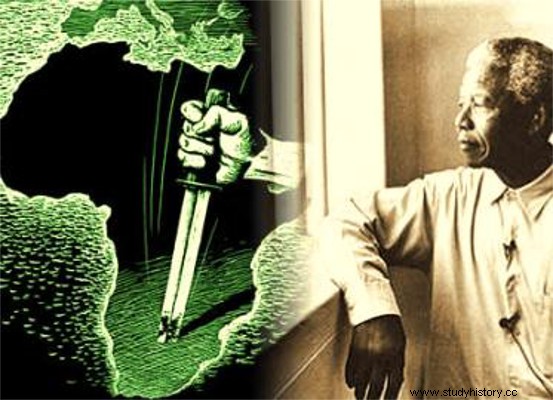
In its recent history, South Africa has had its trajectory marked by the question of colonial exploitation. In the 15th century, the region was of great importance in supporting the Lusitanian mercantile project, which used the ports of its coastal portion as a point of connection between the Indies and the Iberian Peninsula. Two centuries later, the colonization of Dutch Protestants promoted the installation of a new social group known as the Boer.
In the 19th century, the British also became interested in this same region, especially after discovering the rich deposits of diamond in South African soil. At that time, the neocolonial interventionist action of the British favored the creation of a series of laws that reinforced the superiority of the population of whites over blacks. One of these first laws was the “Native Lands Act”, which guaranteed approximately 90% of South African space to the white population.
With the process of urbanization and economic modernization that reached the urban centers of the country, this segregationist policy promoted poor remuneration and the spatial separation of the black population concentrated in neighborhoods without the minimum infrastructure. Another regulation that reaffirmed this distinction was the Pass Law, which obliged blacks to use a type of official document that authorized them to circulate in certain places in South Africa.
Reacting to such impositions, a group of intellectualized or middle-class blacks organized the African National Congress (ANC), which advocated civil disobedience as a means of subverting the demands of the racist government. On July 26, 1952, several insurgents formed the Campaign of Defiance, where they united in Port Elizabeth to publicly protest the segregationism instituted by the National Party, exclusively composed of the country's white elite.
The government's harsh response, made through the arrest of the protesters, served for other blacks to support the uprising against the current order. In 1955, another gathering of anti-apartheid activists, known as the "People's Congress", drafted the "Liberty Charter", which claimed that rights and duties in Africa should extend to the entire population. Once again, the white government reacted rigorously with a law that provided for the imprisonment of anyone who carried this document.
In 1959, during the government of Hendrik Verwoerd, a great campaign began that encouraged blacks to burn the passes. In the southern region of the country, around 10,000 blacks gathered peacefully to express their clear dissatisfaction with the regime. In response, government troops opened fire on an unarmed crowd resulting in the death of sixty-seven protesters, including women and children.
The unfortunate episode became known as the “Sharpeville Massacre” and spurred a wave of protests inside and outside South Africa. After that, ANC supporters began to advocate armed struggle as another means of ending apartheid policy. As a result, the country suffered from the civil war and, soon after, the ANC had its leaders arrested and tried by the authorities. Among other imprisoned members was Nelson Mandela, sentenced to life imprisonment for the crime of conspiracy.
Printing yet another front of repression against the protests, the segregationist government developed the so-called bantustans, huge ghettos where thousands of blacks were forced to live close to the industrial regions of the country. Such measures only worsened the racial conflict and increased pressure from the international community against the actions undertaken by apartheid. After the independence of countries such as Mozambique and Angola (1975), the movements for racial equality gained more strength.
Over time, the UN economic embargo and the departure of multinational companies – who feared the radicalization of conflicts – pushed for the revision of racist laws. During the government of P.W. Botha, the increase in conflict between black civilians and the military resulted in the arrest, torture or murder of more than 50,000 insurgents. At each funeral procession, small and impressive demonstrations were organized that called for an end to the bloodshed.
In the meantime, Nelson Mandela has become – even while in prison – a great symbol of struggle. In several organized protests, the release of the black leader was a mandatory agenda. In 1989, the liberal government of Frederick de Klerk promoted the legalization of the ANC and instituted the release of Nelson Mandela. In 1992, a referendum aimed at the white population voted to end apartheid. Two years later, Nelson Mandela was elected president in the country's first multiracial elections.
